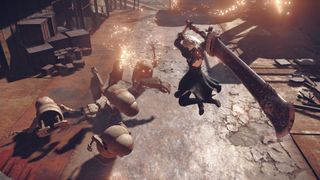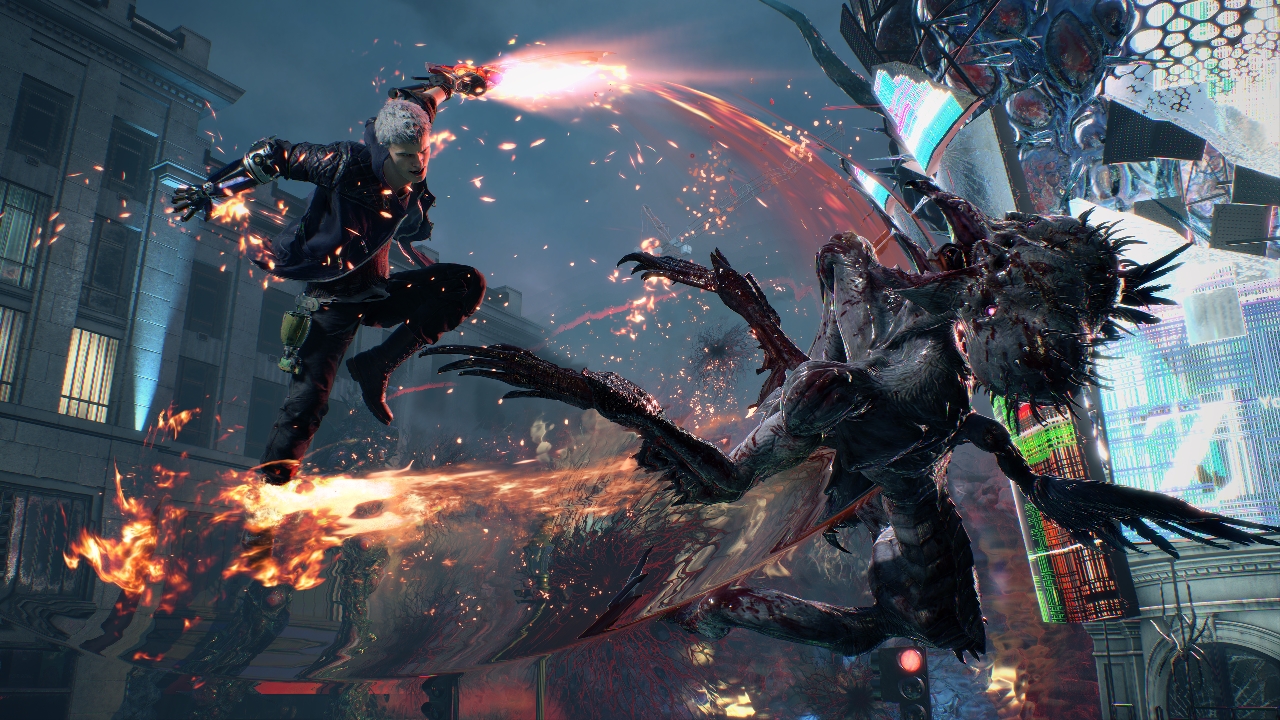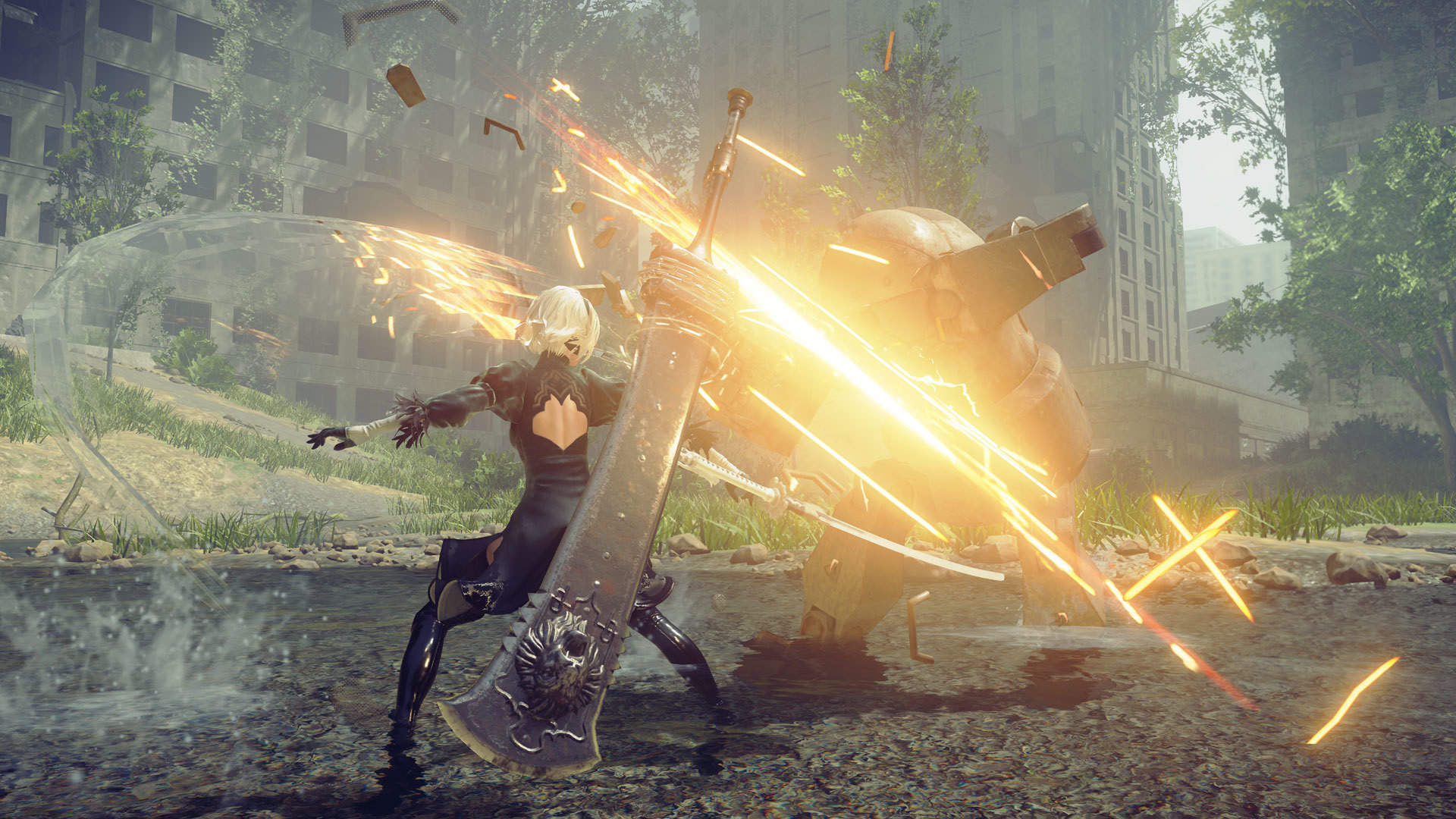Four veteran combat designers on how to make a battle system memorable - rodriguesaforeg
Four veteran combat designers on how to make a battle system memorable

My attempts to define what a fight system is continually escapes me. Is it a put of interconnected abilities? Is it the arrangement whereby players upgrade their in-game characters? Is it a core ingredient of a gage that sublimely supports the story? Beaver State is it all of the above – a wildcat that's impossibly hard to tame and crim to your testament, but a thing nonetheless that will delimit any action-orientated game?
When you think of an "action" game, you might remember of Nier Automata's smooth brilliance and finesse, or you mightiness think out of Assassin's Creed Valhalla's unmerciful melee bouts. Alternatively, Devil May War cry 5's rapid response-supported button presses might spring to intellect, Beaver State Adept Wars Jedi: Down Order's glistening, sailing lightsabers. Any the eccentric, they're four titans of the action genre. But what do its lead combat designers cerebrate a battle system should do to make itself memorable for the player? What factors rise above all else throughout development to provide a basics for the rest of the game to flourish?
Quaternary approaches to building a memorable combat system

To do that first question leastwise, Devil May Call out ex-serviceman Hideaki Itsuno reckons IT's every last roughly difficulty. Itsuno explains that, in order to shuffle a battle system "memorable" to the instrumentalist, the developer needs to present tense the player with a difficult scenario. Through this, Itsuno believes, the player will analyze the situation and come up with their own strategies, so they're constantly utilizing the parts of the game's "toolset" with which they feel for the most comfortable.
Sensation Wars Jedi: Down Order of magnitude and former God of Warfare lead-in Jason de Heras approaches the challenge with a similar mindset. "A combat scheme consists of an interconnected set of rules which creates an engaging high-power between the musician and enemies," says de Heras, adding that "a memorable fight arrangement exploits and strain tests these rules to challenge the histrion in a wide variety of ways finished the course of an full game."
Assassin's Creed Valhalla's link game managing director, Gareth Glover, believes this question is "sadly one with no literal definitive answer." Glover instead points to several key aspects, including the flow of fighting aligning with your game's character, combat moves feeling impactful, and a swell-balanced forward motion system. Solely when all of these individual components have been integrated and balanced, Glover says, can your combat system feeler being unforgettable for a player.
With Valhalla, Glover looked right the game's core systems to create a memorable combat loop. PlatinumGames veteran Takahisa Taura takes this philosophy a step further. The Nier Automata armed combat lead prefers to have the game's storyline develop during battles, boss characters attacking in time with the game's euphony, and foeman attacks impacting the game's interface. The bosom of a "unforgettable" scrap system, Taura believes, is the confluence of core combat mechanics and systems that live outside of battle – a combination that's evident in so many of PlatinumGames' releases.
Tricks of the swop

Something plenty of fighting designers have it away sneaking into games are "tricks", hidden aspects that the game doesn't communicate to the player but will at long las impingement their experience in battle. A prime example is Doom's final few wellness points of the Doom Slayer secretly counting for farthest much than the appreciate bright up connected the screen, to make the player spirit like-minded they're walking a fine line between life and death. How answer these cardinal combat veterans utilize tricks to through and through armed combat to help guide the player and better their experience?
For Glover, these "tricks" mainly rotate around the foes attacking Eivor in Walhalla. "We wont some thin 'tricks', for instance to manage the number of enemies attacking the instrumentalist, their positions, and the timing of their attacks," says the director. These are two key ingredients which make combat much more directed for the player, even though it's ne'er explained outright to them that this is happening.
Itsuno takes a pretty suchlike approach. The Devil Crataegus laevigata Cry 5 director explains that he tries A hard as possible to limit the ways a player arse conk via mistakes of their own devising. Thus, Devil May Cry 5 does "things like adjusting soured-screen enemy attacks and the hit detection for dodge moves," says Itsuno. The game director says being overpowered is just plain boring, but there's an incredibly tough line to walk in making the thespian feel herculean, piece as wel keeping them on their toes with tough encounters.
For Taura though, it's totally about creating a "soothing" see that players can "teem their Black Maria into." The gameplay oldtimer points to midget tricks interlocking with one some other, and in a way that the participant may even be able to pick out and anticipate them. IT power follow something as simple Eastern Samoa the game's background music transitioning automatically to a combat track once the punches start flying, or a combat system that "lets you catch the foe even without using a lock on system." To boot, Taura buys into Glover's method acting of putt a hard throttl on the amount of enemy attacks pelting the player, and Itsuno's beliefs of limiting soured-test attacks from enemies the player can't see.
Fallen Order lead de Heras, meanwhile, ascribes to empowering the actor through tricks. Invulnerable frames of invincibility, for example, can be utilized to make player mistakes feel more kind, but use this generously and IT risks making enemy movements and deportmen obsolete. "There's a delicate balance of look overpowered versus giving the instrumentalist tolerable tools to feel skillful and achieve command through their developer understanding of timing and rhythm." Diamond State Heras points to time manipulation tricks, like slowing perfect the game upon a successful parry, as beingness cardinal to making a game's combat organization more than digestible for any player.
Back to basics

For each of these games, combat is a lot front and center. You don't pick up Get to May Cry 5 to visit the localised tourist attractions in Redgrave Metropolis, nor do you bribe Star Wars Jedi: Dead Say in the hopes of forgoing lightsabers. Considering combat is much a focal point of these action games, how coiffure said combat systems change concluded the course of development? A game can realistically have a development period of higher up four years, so what change does the sum combat loop ensure during this time?
For Nier Automata, the answer to this motion is really microscopic. Taura explains that the core group combat arrangement wasn't developed through trial and error, but as an alternative quickly worked up in a comparatively improvident amount of time. After producing a fight system that felt jolly "sanctioned" (a word you wouldn't normally link with Automata), Taura and PlatinumGames brought out other distinguishing elements of the combat in harmony with Automata's wider themes, "by harmonizing that scheme with the other elements."
As you can probably suppose, Capcom took an legal action-first approach to Devil English hawthorn Outcry 5, producing and refining the core battle systems before investing heavy in else aspects of the game. Itsuno deliberately points to other elements of Devil May Cry 5, like the narrative, tear down design, and puzzles, "need to embody designed in tandem with the action," reported to Itsuno, and sol if the combat loop were to switch in any significant way during development, it would think of elements like these would have to be completely discarded and restarted from scratch.
That's non to enounce the better points of the litigate system can't change, however. Arsenic First State Heras points out, it's actually the Book of Job of the combat designer to fine tune various numbers racket and values to achieve a desired balance and feel. The combat veteran specifically points to the "sized" of the parry window dynamic during development of Superstar Wars Jedi: Fallen Order, even down to the milliseconds, in order to prevent the player from feeling also superhuman. Just even this can undergo a smash-on effect: how does a small parry window pair with an incredibly fast enemy onset? This is retributory one so much area that needs to embody continually iterated upon and changed passim the course of maturation, de Heras explains.
Glover, in the meantime, is in a slenderly dissimilar situation than each the other designers present. The game director has an established post-launch period to work on with, where Assassin's Gospel Valhalla's expansions have introduced profound changes to its combat system with abilities and skills. Glover sees this Post-launch period as an file name extension to promote repeat Valhalla's scrap, adding in not just new skills and abilities, but armor sets and weapons with new perks and effects. "We use this opportunity to endlessly balance and amend the inwardness combat systems and experience, only also to add new battle ingredients ilk new 'instrumentalist skills' and 'abilities' that offer new options and tactics in fighting," says Glover.
Tricky tutorials

So how does one tutorialize all this? Pickings years upon years of changing designs, base philosophies, differentiating abilities and skills, and bundling them all up in a bundle to the role player is a monumental challenge. Simply but then, do you even need to gift the histrion with every combat selection and ability all at once?
Taura, for one, spends plenty of time considering this issue. The PlatinumGames dev actually thinks a tutorial is best when it's integrated into the game's level, and allows the player to revel something other, for illustration fictional character building and storytelling, while the tutorial rolls happening. "I believe a better method would be something that allows the players to hear gradually through a tutorial which is not just a part of the game system, but is also well integrated into the game's setting and story," the PlatinumGames veteran adds.
Diamond State Heras thinks introducing a new move or mechanic in a circumstance where they're relevant primes the participant to understand the importance of said ability. Itsuno likens playing a game to learning how to ride a bicycle. The DMC pioneer believes it's vital that players make out the canonic controls and movements, so they can go full steamer ahead in the lame without any interruptions to the atmosphere and tension."But in reality, players don't want to have to study informed a halting – they want to get right into it as soon arsenic possible," Itsuno says. "We have to try to spread out non just control tutorials, but the room we teach them about the spunky's stage setting too so they can understand it step by step, hopefully while retention near tempo and not breaking engrossment overmuch."

All throughout January, GamesRadar+ is exploring the biggest games of the new class with scoop interviews, hands-on impressions, and in-depth editorials. For many, be sure to follow along with Big in 2022 .
Source: https://www.gamesradar.com/four-veteran-combat-designers-on-how-to-make-a-battle-system-memorable/
Posted by: rodriguesaforeg.blogspot.com


0 Response to "Four veteran combat designers on how to make a battle system memorable - rodriguesaforeg"
Post a Comment